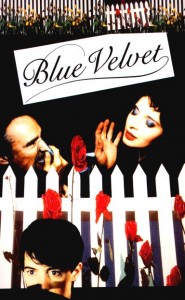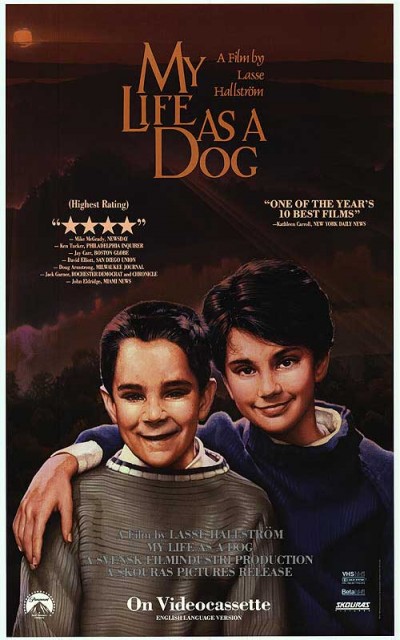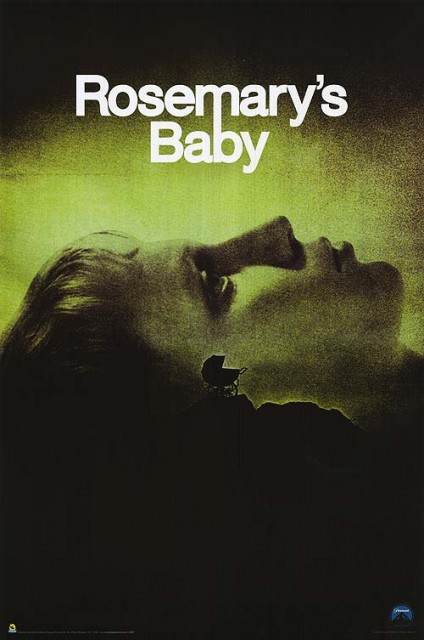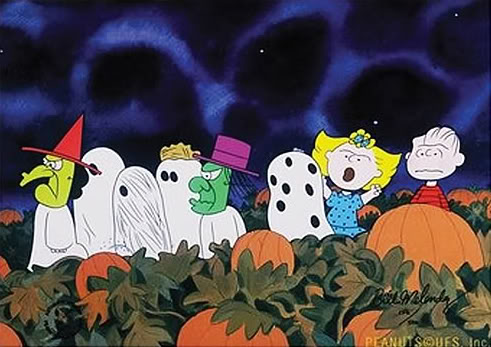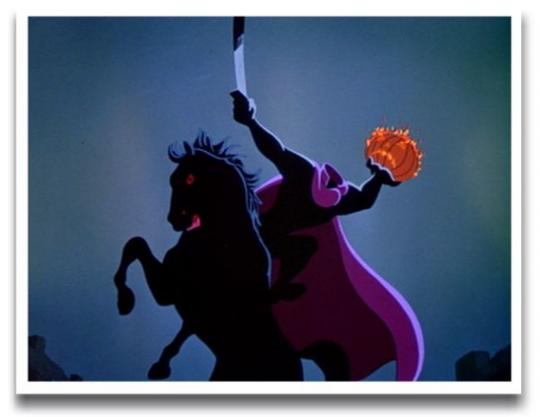Category Archives: Movies in Bed
Movies in Bed: Blue Velvet
Post by Josh Zinn.
A code of conduct listed in the Disneyland new employee manual states, “All cast members must appear calm, content, and capable while working. At Disneyland a pleasant smile is a personality trademark that we use all the time in greeting, directing, and making our guests feel comfortable. You don’t have to laugh, just smile. Don’t be a Gloomy Gus or a Grouchy Gertrude.”
During the opening minutes of David Lynch’s “Blue Velvet,” the town of Lumberton appears to be an idyllic place, the kind of community where even Grouchy Gertrude’s cannot resist a grin or two. As hyper-saturated flowers sprout through the ground, children excitedly scurry to school, and fire trucks cut through the dewy morning haze, all seems right with the world. Like a neighborhood that has emerged from some promise of sanctity made by “Ozzie and Harriet” and “The Donna Reed Show,” the artifice of its mise-en-scene is intoxicating and familiar not because it resembles the world we live in—or even necessarily desire to—but because it is a portrait of what we’ve been told our lives should aspire to be.
Underneath its façade, however, not everything is so squeaky-clean. As the opening sequence continues, Lynch introduces elements of the grotesque amidst this artificial environment. A gun appears briefly on a television; a man collapses while watering his lawn; and, as the camera moves past his still body, cutting through the grass, an underworld of insects is discovered writhing beneath the blades. Presumably they have always been there, but like so many things eventually uncovered in this town, their existence has been buried under the layers of innocence, tranquility, and self-imposed naiveté Lumberton’s reputation is built upon.
This duality in reality, of experiencing and acknowledging the darkness that thrives beneath the manufactured gloss of our clichéd suburban ideals, is the heart of “Blue Velvet’s” story. Because Lynch’s introduction of Lumberton in this sequence is so steeped in the kind of Americana nostalgia where every shot is bathed in filtered light and moves in slow motion, the impression given is that it exists outside of reality, in a realm where Dalmatians really do ride in fire trucks. Neither dream nor truth, the perfection Lumberton appears to exhibit may be seen, then, as the culmination of good intentions and sheer will triumphing over desire and emotion. Like a rehabilitated drug addict, the town is “good” so long as it is able to maintain its behavior. Beneath its fragile exterior, however, its demons continue to look for ways to claw themselves free.
Because “Blue Velvet’s” story descends into what may be construed as the underbelly of Lumberton, it becomes apparent that Lynch is both examining and satirizing peoples’ need to keep up appearances. Quickly exposing both the audience and his characters to the cracks that have begun to riddle the artificial, too-good-to-be-true foundations of the town, Lynch injects the film with a freedom to be unreliable in its depiction of truth. Here, regardless of what may appear to be a meticulously created reality, other forces are always at work shaping the landscape. One simply needs to keep their ear (sliced off or not) to the ground to listen for them.
Like Disneyland, a smile may go a long way in Lumberton, but that doesn’t necessarily mean everything is okay.
Movies in Bed: My Life as a Dog
Post by Josh Zinn.
The boy has no real home, not anymore. Orbiting around the lives of those for whom he feels his existence is now, in one way or another, a complication, his time is spent comparing what he endures with the lot of those whose circumstances appear to have been far worse than his own. It’s a way to get by in this transient life, when you’re viewed more as an attachment, a burden, a nuisance, a pet, than as someone worth knowing. “At least we’re not them,” we tell ourselves, all the while knowing we probably wouldn’t spend so much time thinking about it unless some of their pain resonated with our own.
Lasse Hallström’s “My Life as a Dog” knows what it’s like to feel forgotten about and left to drift towards some unknown oblivion. Like so many of the stories that flow through his mind, the film’s protagonist, Ingemar, is a boy whose happiness and well-being has become an after-thought. Seemingly unwanted, he lives on the outskirts of life, confined to adjunct spaces, with the rest of the world now existing behind shut doors or in memories of better times with his mother. Like Laika, the first dog in space whose fate is ruminated over throughout the film, Ingemar’s idea of his future appears isolated, grim, and hopeless.
To portray this notion of Ingemar being removed from the rest of the world, Hallström places the boy in a series of confined spaces throughout the film. From a drainage tunnel under train tracks, to the cabinet he hides under when his Mother is taken away, to the small spaceship-shaped “funhouse” he hides away in, Ingemar is put in places where he won’t be in the way. Unaware of the complexities of life taking place around him and confused about the changes happening within his own body, Ingemar is frequently trapped within his thoughts, unable to explain or understand what he is feeling. These pockets of solitude, then, become a representation of the darkness—the naiveté—that he must emerge from if he is to find his place in the world.
These allusions to space and rebirth also play a more obvious role in the two attempts Ingemar and his friends make to jettison a makeshift “spacecraft” they find in the old barn. Their first attempt, made when Ingemar is still stuck and holding back from embracing his new surroundings, comes to a halt in mid-air, literally leaving its crew hanging. The second attempt, coming at the end of the film—following a climactic breaking down of the fun house door and Ingemar’s subsequent exorcism of grief and guilt—successfully flies but, even more importantly, comes crashing back down to earth and into a puddle of cow manure. Now knowing he is no longer destined to float away into the ether, Ingemar learns that living an engaged life often means dealing with the crap you’re bound to find yourself in from time to time.
Movies in Bed: Rosemary’s Baby
Post by Josh Zinn.
Walking home today I passed by a woman, no more than forty, weeping over the loss of her beloved sock monkey. I knew it was a knitted primate her tears were shed over due to the fact that she kept exclaiming wildly, “My monkey! My sock monkey! It’s gone!” as she buried herself in the bosom of a friend whose grimacing face conveyed the fractured duality of concern and annoyance that frequently accompanies the consoling of friends. It was like a scene from Beckett—had Beckett ever tackled the all-too-common personal catastrophe known as “Sock Monkey Bereavement.”
The loss of innocence, as you well know dear readers, far exceeds just the complicated conundrums of sayonara sock simians. In an age when colony collapse disorder is robbing the world of honey whilst Honey Boo Boo showers the world with sass, it can be difficult to ascertain what truly matters and why, in the end, we’re supposed to care at all.
Thank goodness, then, for “Rosemary’s Baby!”
Really, think about it: Compared to the miseries that befall Rosemary Woodhouse as she unwittingly sets down a path that will lead her to give birth to the son of Satan, is an overdue electric bill or a missing monkey THAT big of a deal? Sure, it can be a bit of a pain to spend your afternoon on hold, listening to Phil Collins plead to be taken home while the winter’s darkness envelopes your frigid studio apartment, but it’s not as if your husband and a coven of witchy senior citizens secretly made you bring forth the antichrist. It’s all about perspective.
A classic of horror cinema, Roman Polanski’s “Rosemary’s Baby” takes the idea of forced demonic birth (typically a bummer) and uses it as a metaphor for the inability of our reality to always match up with our hopes and aspirations. Rosemary may think that she’s got the ideal life she always dreamed of, what with her fancy Vidal Sassoon haircut, actor husband, and enormous apartment on the Upper West Side, but the fact of the matter is that the woman has severely underestimated the tenant requirements in her snazzy new co-op. Needless to say, it pays to read the fine print when Beelzebub is on your building’s board of directors.
As you can imagine, life quickly becomes a nightmare for Rosemary as the forces of darkness conspire to give her morning sickness. What’s worse, while she is suffering—saddled with the upheaval of both her dreams and last night’s dinner—her husband is engaging in nefarious games of paranormal pinochle with the witches and warlocks down in Apt. 6B. Where is the humanity!? Alas, life, it seems, is a losing game for Rosemary, with the cards definitely stacked in Ol’ Scratch’s favor.
While it may seem unfair or unmerciful to compare a stranger’s overwrought reaction to the loss of their sock monkey with the bringing forth of the apocalypse, this contrast serves to highlight how all-too-easily we allow the small things in life to dominate our emotions. While the importance of possessions (demonic, sock monkey, or otherwise) should never be underestimated, it’s hard not to imagine a beleaguered Rosemary, cloven-hoofed child nestled against her breast, telling this maudlin monkey mother to go and, “put a sock in it.”
Movies in Bed: It’s the Great Pumpkin, Charlie Brown!
Post by Josh Zinn.
Though the thrill of Halloween and the festivities and decor the season brings with it still resonate deeply inside me, I must confess to feeling at a loss as to how to properly celebrate this ghoulish holiday as an adult. Truth be told, I find little enchantment in the idea of going to parties where drunken Draculas, kissy-face kitty-kats, and naughty nurses mingle and cavort whilst techno-rave renditions of the Monster Mash thump from cotton cobwebbed speakers. Heck, if I had my druthers Halloween would remain the holiday of my childhood, with trick or treating, haunted houses, and pumpkin carving taking precedent over frat guys dressed as popes pounding Pabsts.
Maybe that’s why today much of my Halloween tradition includes watching as many spooky holiday specials as I can. Because I lose most of my ability to be judgmental when confronted with an animated jack-o-lantern, the majority of these programs have little-to-no artistic merit. Oh sure, there’s probably a way someone could construct a found poem from the dialogue spewed forth in the wittily named “Fat Albert’s Halloween Special,” but I merely prefer to sit back and allow America’s second-favorite rotund representative of the inner city (tip of that hat to you, Biggie) to enlighten me through shoddily animated examples of the proper ways to inspect Halloween candy.
Occasionally, however, certain holiday cartoons are able to excel beyond their “sponsored by Pudding Pop” pedigree. With its lovingly neurotic and sincere tone, “It’s The Great Pumpkin, Charlie Brown” is just such a feature. In fact, other than the previously reviewed “The Worst Witch,” it may rank as my favorite Samhain special.
Here’s what you need to know: no one likes Charlie Brown, yet that doesn’t stop him from wishing everyone would. Here’s what you also need to know: No one else believes in the Great Pumpkin, yet that doesn’t stop Linus Van Pelt from wishing that the grand gourd of the night will pay a visit to his most sincere of pumpkin patches.
While I am aware that, on the surface, this may sound like a story about disillusionment and the realties of dementia and class-based ostracism, what makes this Halloween tale so charming, disarming—as well as a boon for urban pumpkin farming—is its lack of pretension and its utter belief in the emotional and social worth of childhood desires. That may sound like a heavy way to describe a bunch of Peanuts, but what separates “It’s The Great Pumpkin Charlie Brown”’s wheat from the rest of the cartoon chaff is the way in which it honors and acknowledges the fears and foibles that plague the minds of the under-10 set. These characters pursue their dreams not to teach viewers the proper way to look over a mini-Snickers bar, but rather to show them that being different doesn’t stop you from still being worthwhile.
Perhaps, then, it’s Ol’ Chuck and Linus who showed me that, even in my old age, it’s okay to want a Halloween free from the noise of one-too-many Long Island Iced Tea-induced Alice Cooper karaoke contests. Me? I’d rather be sittin’ in a pumpkin patch, waiting to hear something go bump in the night.
Movies in Bed: The Legend of Sleepy Hollow
Post by Josh Zinn.
The street signs of Sleepy Hollow have headless horsemen on them. So do the police cars, garbage trucks, and natural gas meters. In fact, I’m sure a myriad of public utilities take part in celebrating and cashing in on the famed decapitated equestrian whose midnight rides of terror helped transform their humble hamlet into the Halloween haunt of the Hudson hinterlands. Perhaps Washington Irving hadn’t imagined his creepy creation would one day come to signify the call to arms for the men and women working for Sleepy Hollow’s sewage system, but crappier things have happened in the name of public works—just ask the folks who named Flushings.
If one were to ask the Headless Horseman himself—hey, he might know sign language…even though he doesn’t have eyes—what moments in his fictional life truly felt like a misappropriation, however, he’d probably tell you about the time I purchased a key-lime flavored latte (complete with crunchy graham topping!) from a Sleepy Hollow coffee shop. Or the Mexican restaurant named after him that served my friend and I a salad consisting of a HEAD of lettuce alongside a terrine of “bloodied” French dressing. Oh yes, and then there was the time Bing Crosby came to town…
Disney’s animated version of “The Legend of Sleepy Hollow,” starring Crosby as beleaguered schoolteacher Ichabod Crane, is a milder take on Irving’s allegory of foreign-bred superstition and tradition mingling with the bravado, boldness, and greed of the then-new America. By milder, I mean that Ichabod spends much of the cartoon either singing sweet dulcimer notes to the local housewives in an attempt to lure them of their chicken dinners or by balladeering Katrina, the beautiful daughter of the wealthiest man in town, in order to fill his pocketbook. Horror only exists on the outskirts of this Sleepy Hollow, with creepiness taking a backseat to Crosby’s crooning.
“The Legend of Sleepy Hollow” isn’t a bad film by any means, but in shifting its focus away from the terror of Tarrytown and onto the soothing vocal abilities present in Crosby’s portrayal of Crane, Irving’s supernatural story mutates into a pageantry of phthongal pedagoguery better fit for a USO function. Truth be told, there’s little fright to be found in a film where, for the majority of its length, fanatical females fight for the chance to feed a fair-weather philanderer with the voice of a lounge singer. Sure, the Horseman finally rears his hea… neck near the cartoon’s finale, but until then any pervasive sense of dread has been replaced by questions of whether white Christmases happen even for the headless.
Perhaps, then, the Horseman-emblazoned signs, logos, and salads of today’s Sleepy Hollow are a reclamation of the sinister story that put their town on the map. While there’s nothing wrong with a little Bing to lift one’s spirits, it’s best to remember the spirit at the heart of Irving’s story struck a far more horrific note.

